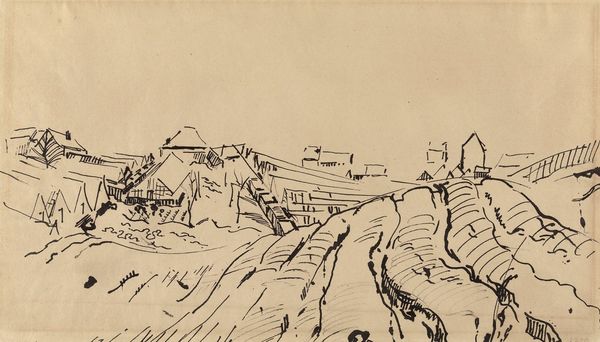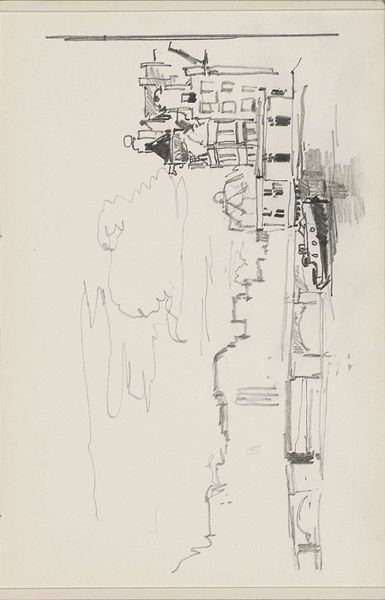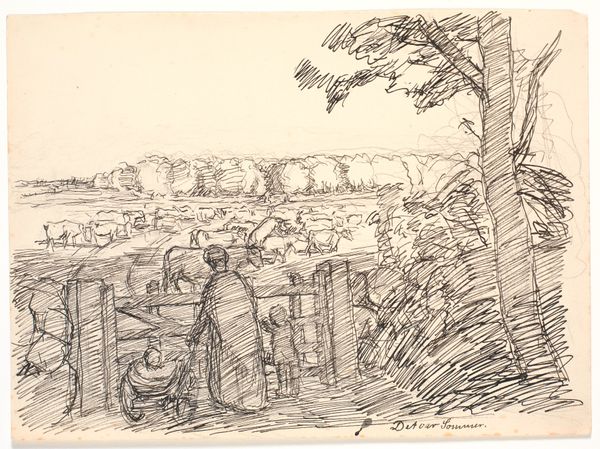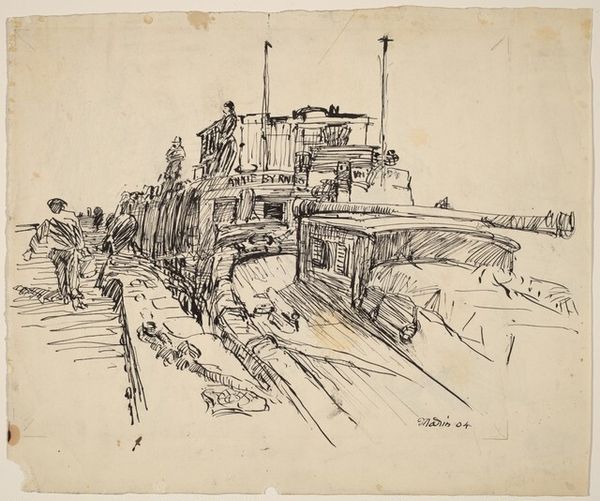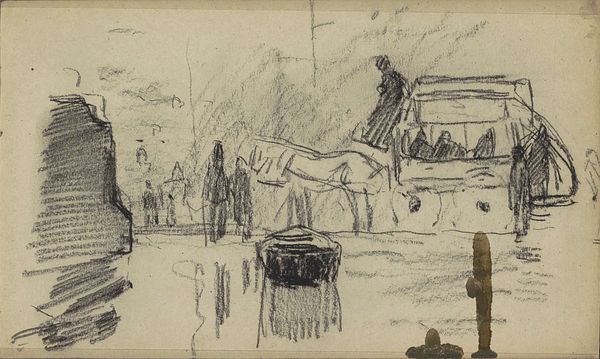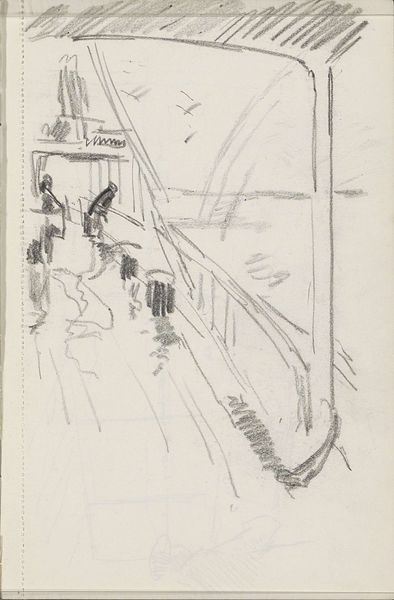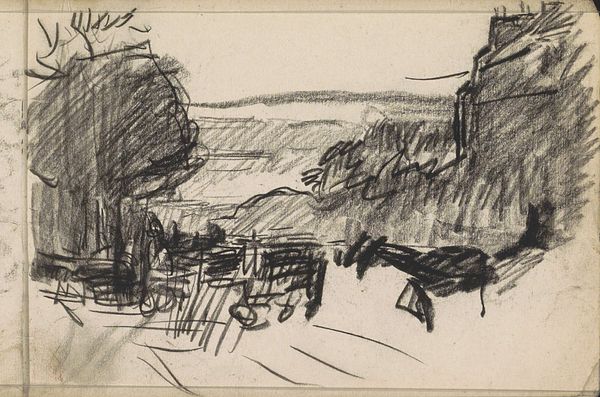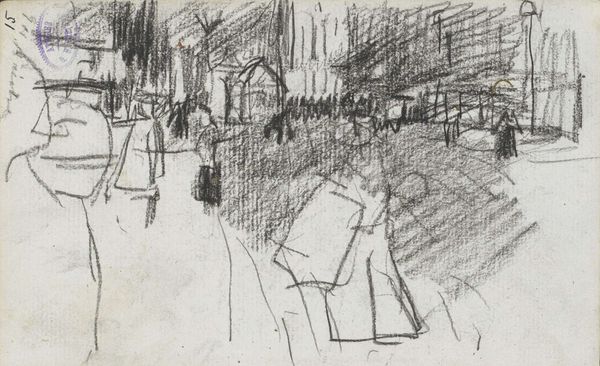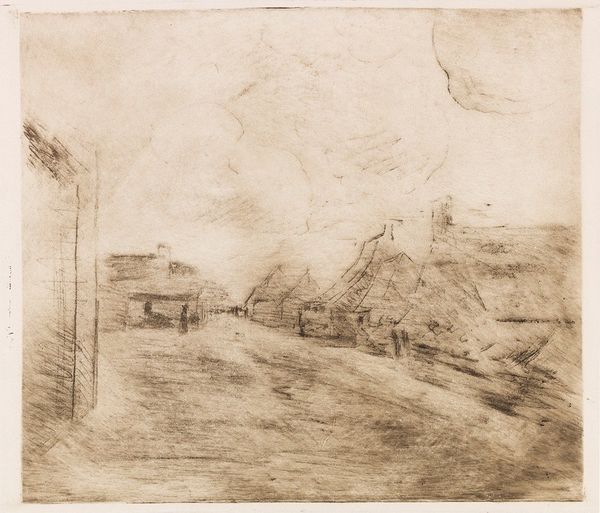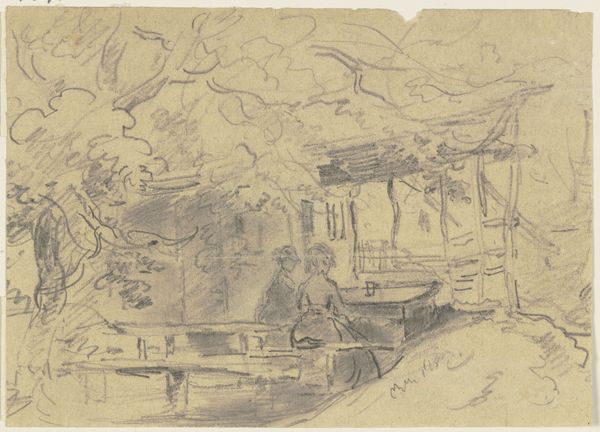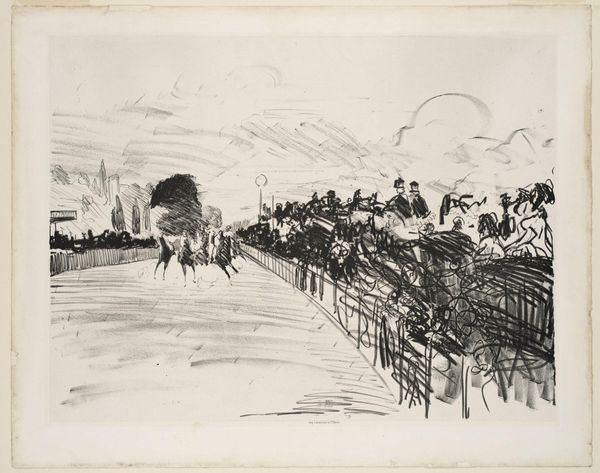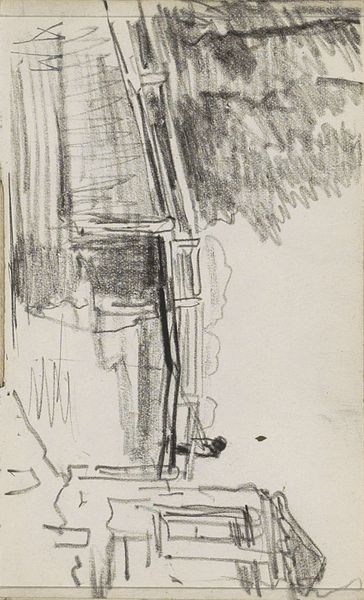
Dimensions: sheet: 12.7 × 19.37 cm (5 × 7 5/8 in.) board: 14.29 × 21.27 cm (5 5/8 × 8 3/8 in.)
Copyright: National Gallery of Art: CC0 1.0
Editor: This is Everett Shinn’s "Polo Field, Piping Rock Club, Long Island," circa 1920, done in pencil and ink. The scene has a casual, almost documentary feel, like a quick sketch capturing a moment in time. How do you interpret this work in the context of its time? Curator: What I see in this seemingly casual sketch is a fascinating snapshot of early 20th-century leisure and social stratification. Consider Piping Rock Club, a space deeply rooted in exclusivity and the perpetuation of elite social structures. Shinn, often drawn to urban scenes and theatricality, captures here a performance of wealth and privilege. How does the impressionistic style contribute to or perhaps critique this portrayal? Editor: I hadn’t really considered the social implications, but the sketchiness does feel like it could be downplaying the opulence, making it seem more everyday. Do you think his artistic choices were a deliberate commentary? Curator: It’s hard to say definitively about Shinn’s intentions, but as art historians, we look at the broader cultural context. The '20s were a time of both immense wealth and growing social unrest. By presenting this scene in such an unadorned way, is Shinn subtly questioning the unexamined privilege on display? Perhaps he invites us, the viewers, to consider our own positionality in relation to these social dynamics. What's your impression of the relationship between this setting and the emerging modernist movement at the time? Editor: That's a really interesting point. I was focused on the style itself and how it reflected other impressionist works, but I hadn't connected it to the social commentary aspect you mentioned. It adds a whole other layer to understanding the drawing. Curator: Exactly. It’s about understanding the conversation the artwork is having with its time, its society, and ultimately, with us. I find myself wondering, in what way does observing this “performance” of social status enable reflection today?
Comments
No comments
Be the first to comment and join the conversation on the ultimate creative platform.
